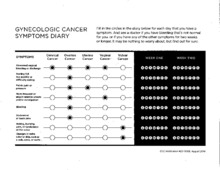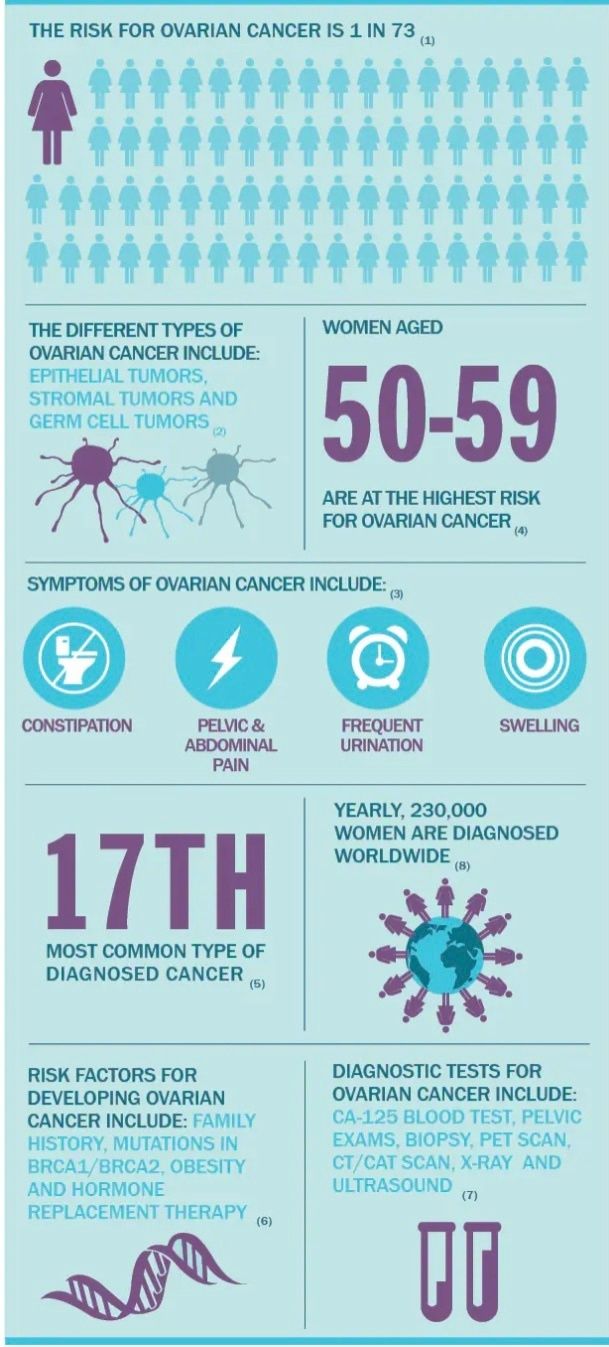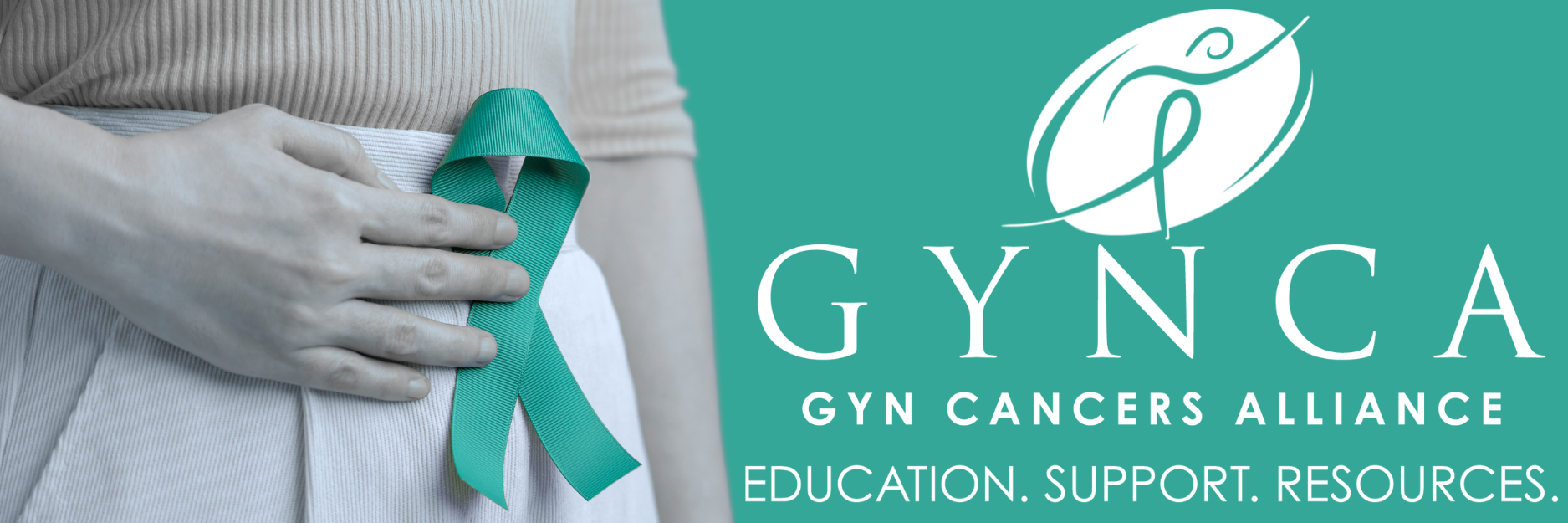Symptom Diary
 PDF
PDF
This diary can be used to track symptoms to give your doctor a clear idea of how long it has been happening.
Warning Signs
About Cervical Cancer
Cervical cancer is the only gynecological cancer that can be prevented by having routine and follow-up screenings. When caught and treated early, cervical cancer is highly curable.
All women who have a cervix are at risk for cervical cancer.
Risk factors include:
Early cervical cancer may not cause signs and symptoms. Cancer in later stages may cause abnormal vaginal discharge or bleeding, particularly after sex.
Cervical cancer is the only gynecological cancer that can be prevented by having routine and follow-up screenings. When caught and treated early, cervical cancer is highly curable.
All women who have a cervix are at risk for cervical cancer.
Risk factors include:
- Smoking
- Certain types of HPV
- Prolonged use of birth control pills
- Having given birth to three or more children
- Having HIV or similar conditions
Early cervical cancer may not cause signs and symptoms. Cancer in later stages may cause abnormal vaginal discharge or bleeding, particularly after sex.

About Ovarian Cancer
Though all women, regardless of age, are at risk for ovarian cancer, 90% of women diagnosed are over 40 years old. Each year, approximately 20,000 women in the United States get ovarian cancer. We have had women here in the Ozarks as young as 14 years old diagnosed with Ovarian Cancer.
Risk factors include:
Symptoms include:
Though all women, regardless of age, are at risk for ovarian cancer, 90% of women diagnosed are over 40 years old. Each year, approximately 20,000 women in the United States get ovarian cancer. We have had women here in the Ozarks as young as 14 years old diagnosed with Ovarian Cancer.
Risk factors include:
- Have a maternal or paternal family history of ovarian cancer
- Having had breast, uterine, or colorectal cancer
- Have never given birth or have had trouble getting pregnant
Symptoms include:
- Pain in back, pelvis, or abdomen
- Abnormal vaginal discharge or bleeding
- Changes in bathroom habits
- Bloating or feeling full quickly while eating

About Uterine Cancer
Uterine cancer is most commonly found in women who are going through or have gone through menopause. Each year, approximately 35,000 women in the United States are diagnosed with uterine cancer.
All women who have a uterus are at risk for uterine cancer.
Risk factors include:
Signs and symptoms include:
Uterine cancer is most commonly found in women who are going through or have gone through menopause. Each year, approximately 35,000 women in the United States are diagnosed with uterine cancer.
All women who have a uterus are at risk for uterine cancer.
Risk factors include:
- Are older than age 50
- Are obese
- Have had fewer than 5 periods a year at any time prior to menopause
- Have had trouble getting pregnant
- Have had hormone replacement during menopause
- Have taken tamoxifen
Signs and symptoms include:
- Pain or pressure in the pelvis
- Abnormal vaginal discharge or bleeding

About Vaginal/Vulvar Cancer
Though vaginal and vulvar cancer is very rare, ALL women are at risk. Each year, approximately 4,500 women in the United States will be diagnosed.
Risk factors include:
Symptoms include:
Though vaginal and vulvar cancer is very rare, ALL women are at risk. Each year, approximately 4,500 women in the United States will be diagnosed.
Risk factors include:
- Abnormal Pap tests
- Smoking
- Having HPV, HIV or similar conditions
Symptoms include:
- Pain in pelvis or abdomen
- Abnormal vaginal discharge or bleeding
- Changes in skin color; sores, lumps, ulcers, rashes, or lumps that don’t go away
- Itching, burning, or bleeding that does not go away
